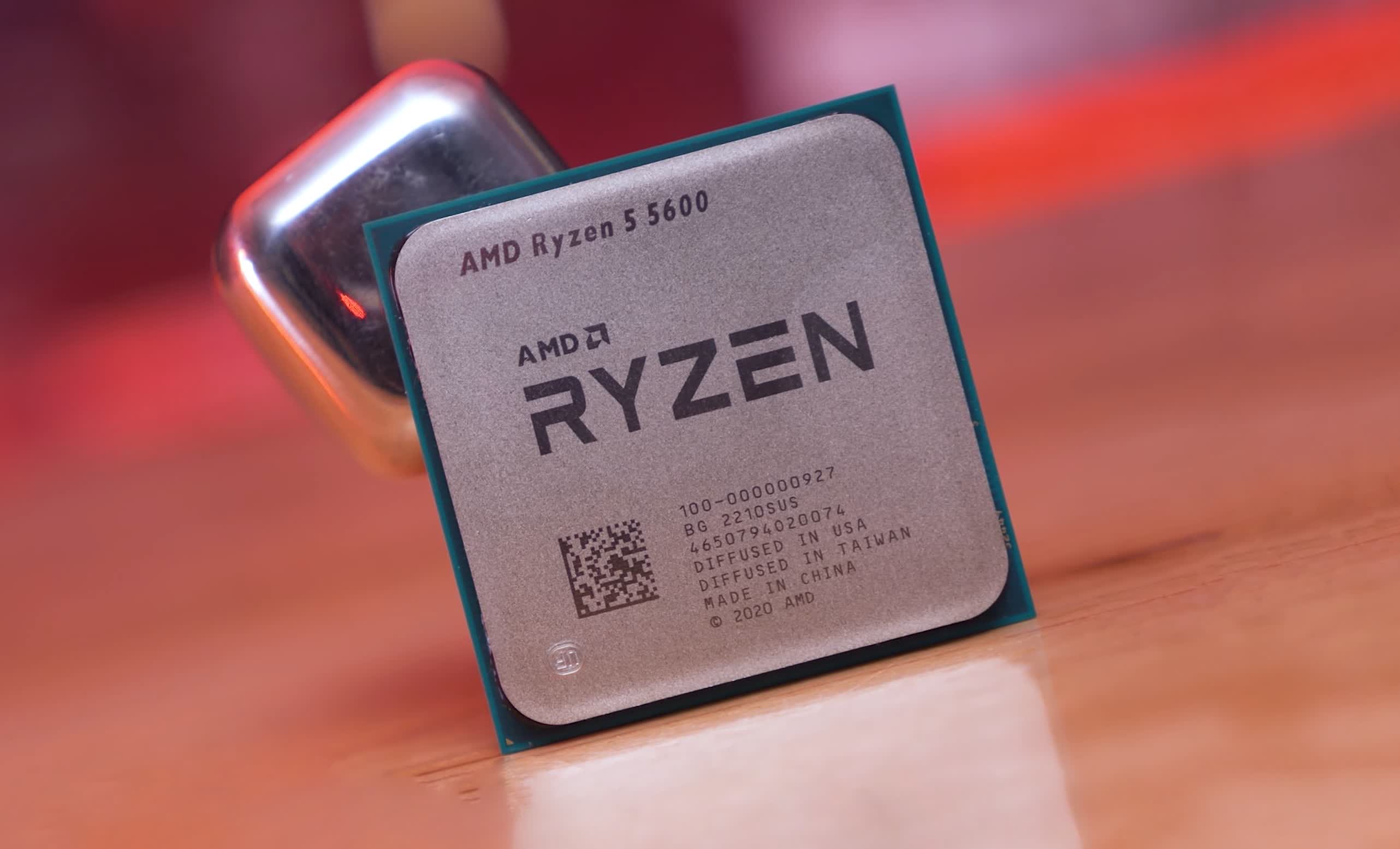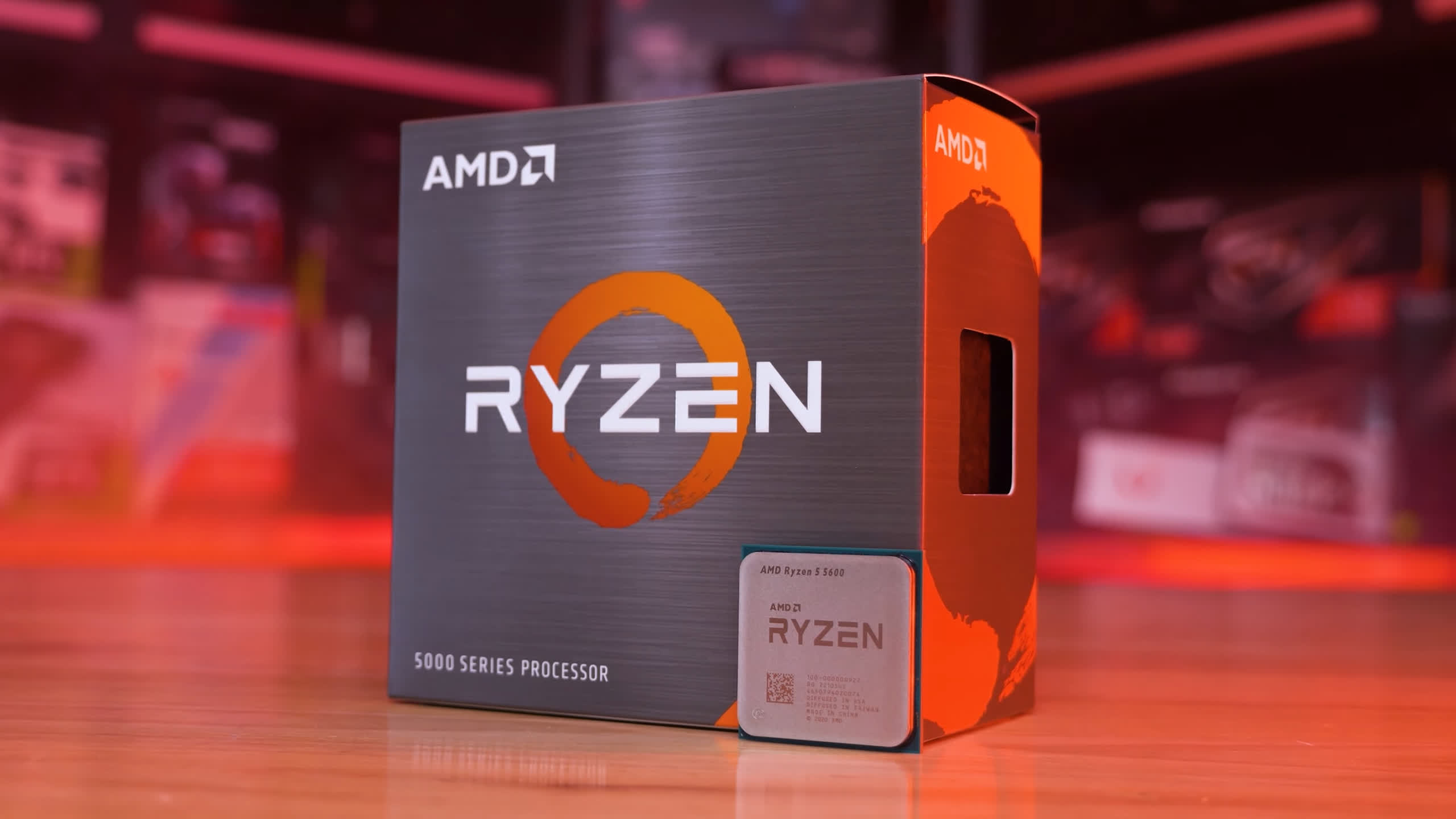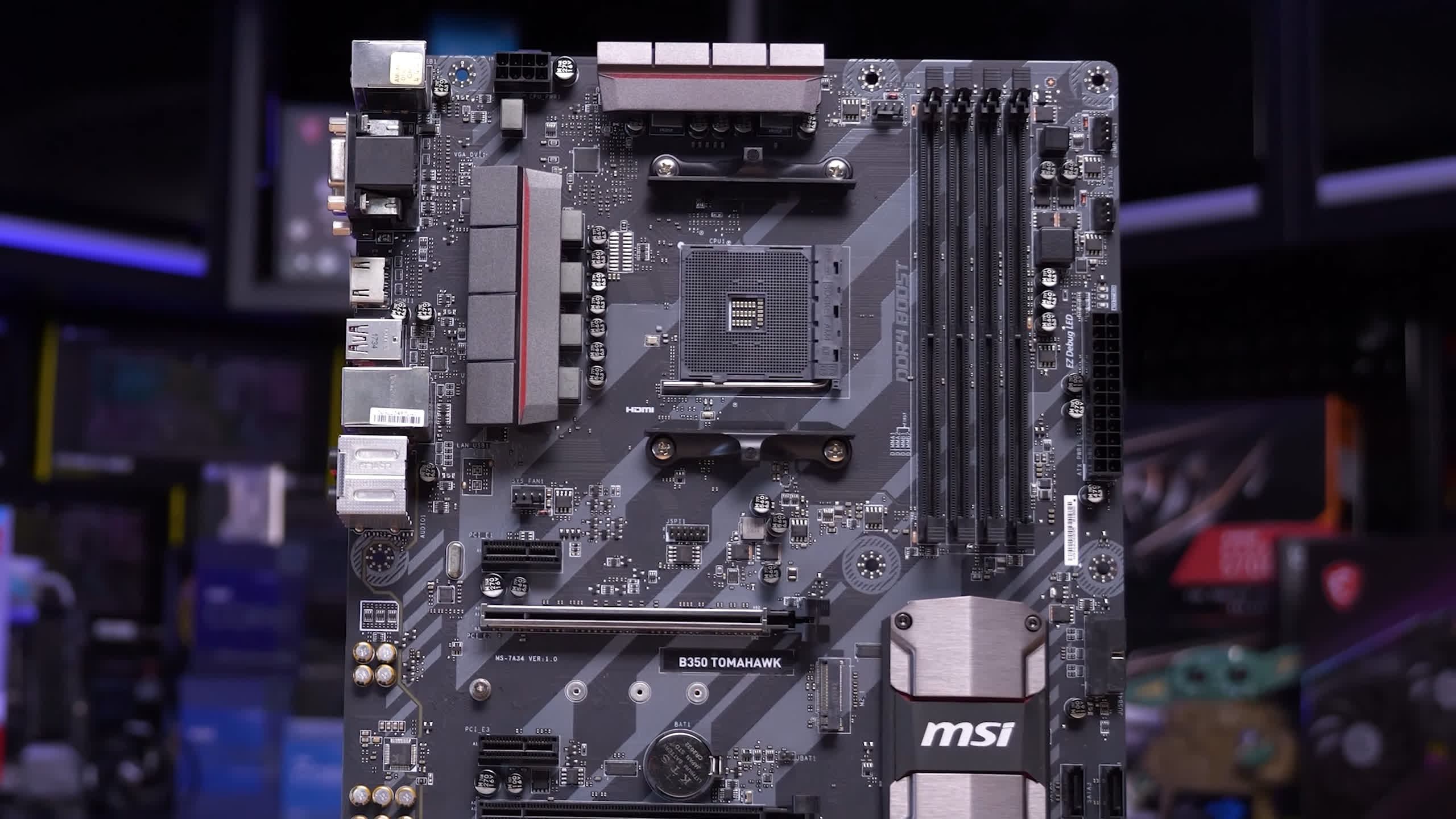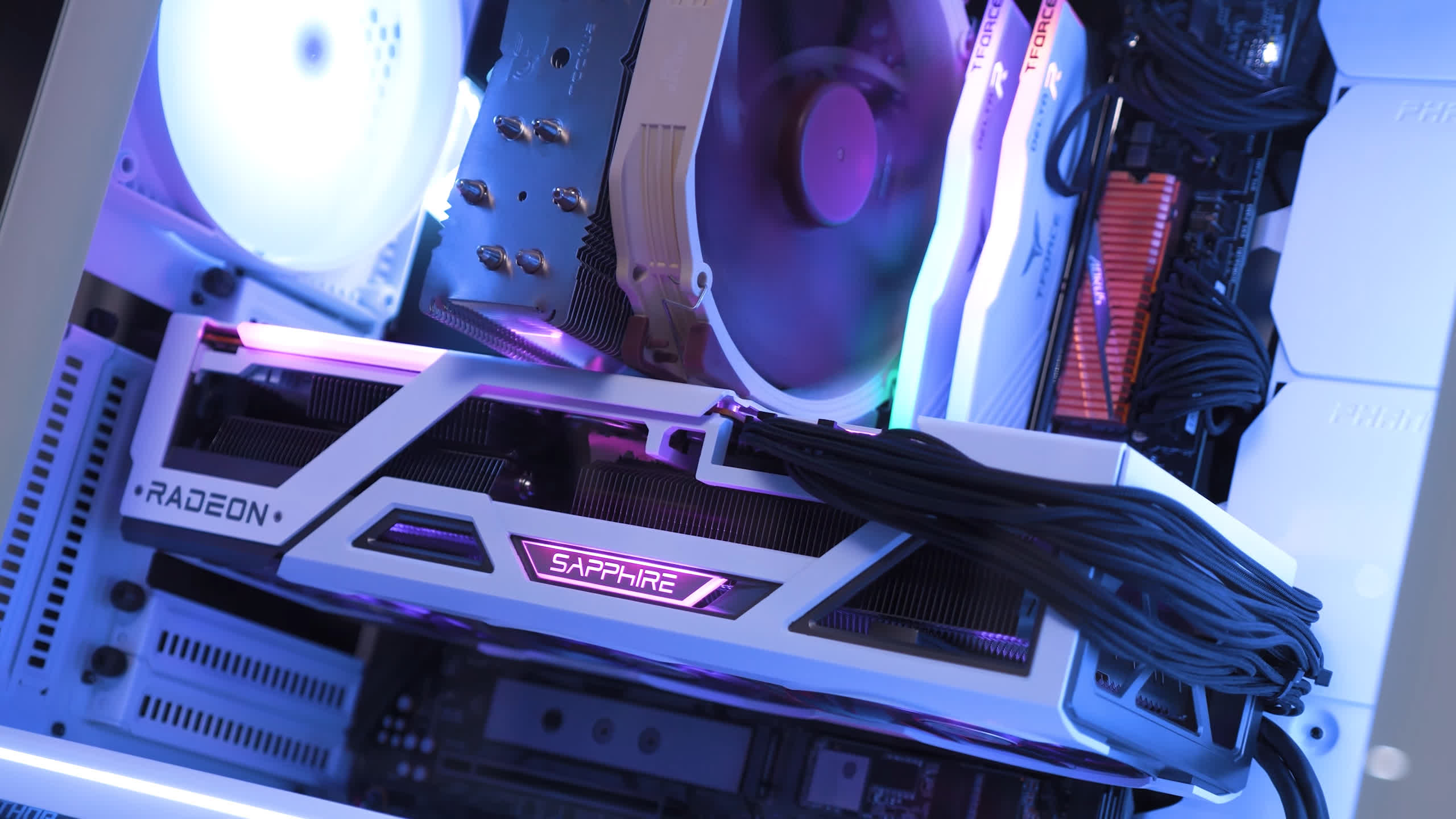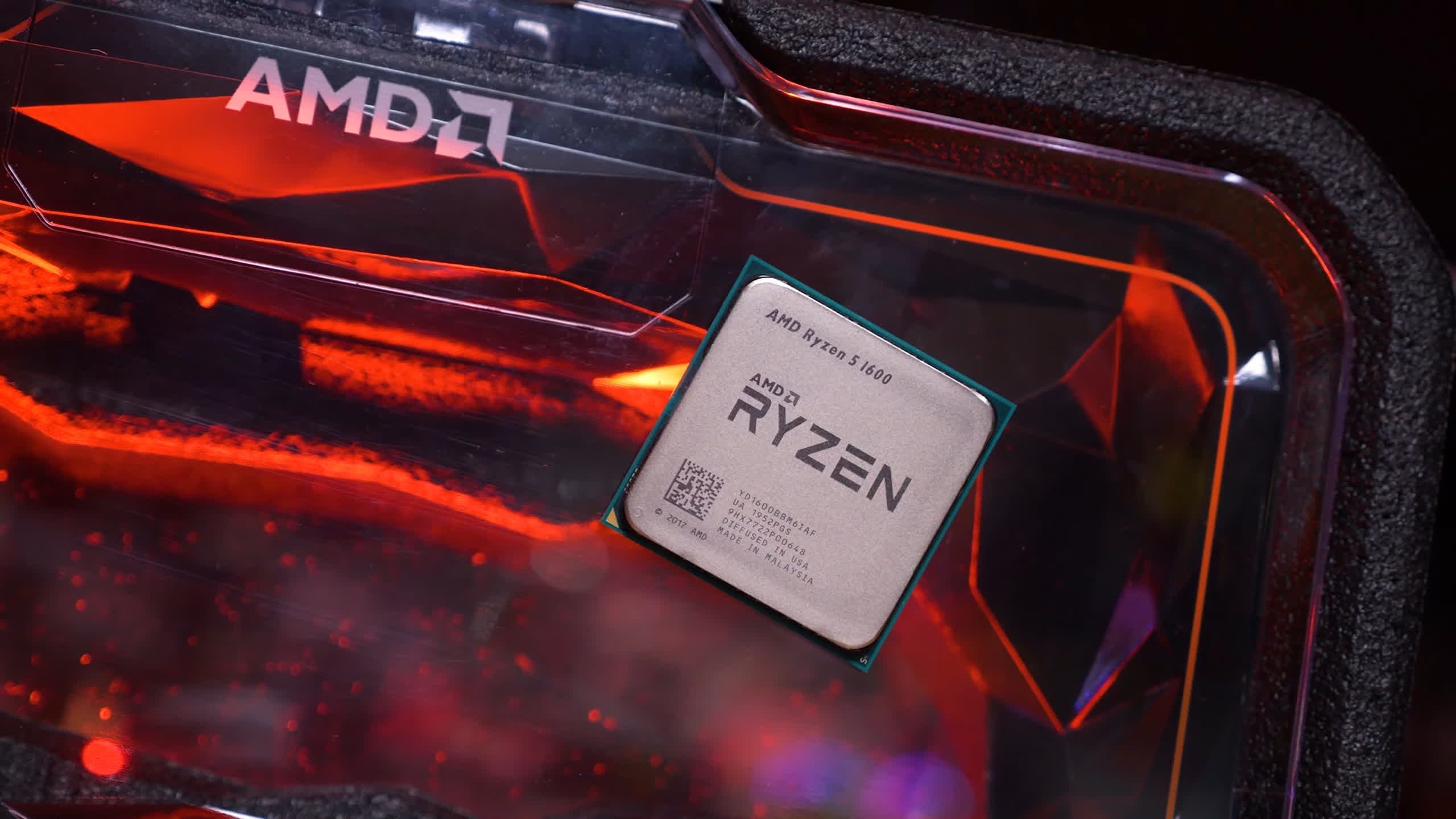This article is not an upgrade guide, rather as you'd probably expect from us, it's a benchmark session, where we'll be taking an old Ryzen 5 1600 system using the MSI B350 Tomahawk and upgrade it with the Ryzen 5 5600. We've already performed the BIOS update, installed the 5600, and we're now going to show you the results.
The Ryzen 5 1600 was released in April 2017 for $220, and at the time it was a cracking good deal, especially if you were building a PC for both productivity and gaming. The nearest Intel competitor was the Core i5-7600K and while it was a solid gaming CPU in 2017, about a year later it was starting to become inadequate.
Although the R5 1600 has unquestionably aged better, in 2022 its performance is very much entry-level. A few months ago, AMD finally released the Ryzen 5 5600 for $200 (not to be confused with the 5600X which launched in late 2020), though it's usually selling for ~$175.
In terms of performance, it's pretty good, basically matching the 5600X and therefore it's comparable to similar priced Intel Alder Lake parts.
For those of you already in possession of an AM4 motherboard, the Ryzen 5 5600 is a no-brainer and if you happen to be using a first generation 300-series motherboard such as the B350 Tomahawk you're in luck as the 5600 is now a drop-in upgrade.
To find out just how much of a performance boost R5 1600 owners are looking at, we'll be comparing it with the 5600 in 25 games at 1080p and 1440p using the Radeon RX 6950 XT and RX 6600 XT with SAM enabled. We'll go over about a dozen of the games tested and then we'll take a look at the 25 game average.
Benchmarks
We'll get started with my personal favorite, Fortnite, a game I've started livestreaming from my personal account on Friday nights, so if you want to get in on that action feel free to join us, it's a lot of fun.
If you happen to play Fortnite using a Ryzen 5 1600 you'll no doubt have found the performance quite acceptable, though those wanting to keep frame rates up over 150 fps, for example, it can be a struggle.
Even with the 6600 XT, we were CPU limited using competitive quality settings and then with the 5600 we're looking at gains as high as 85% using the 6600 XT at 1440p, seen when looking at the 1% lows.
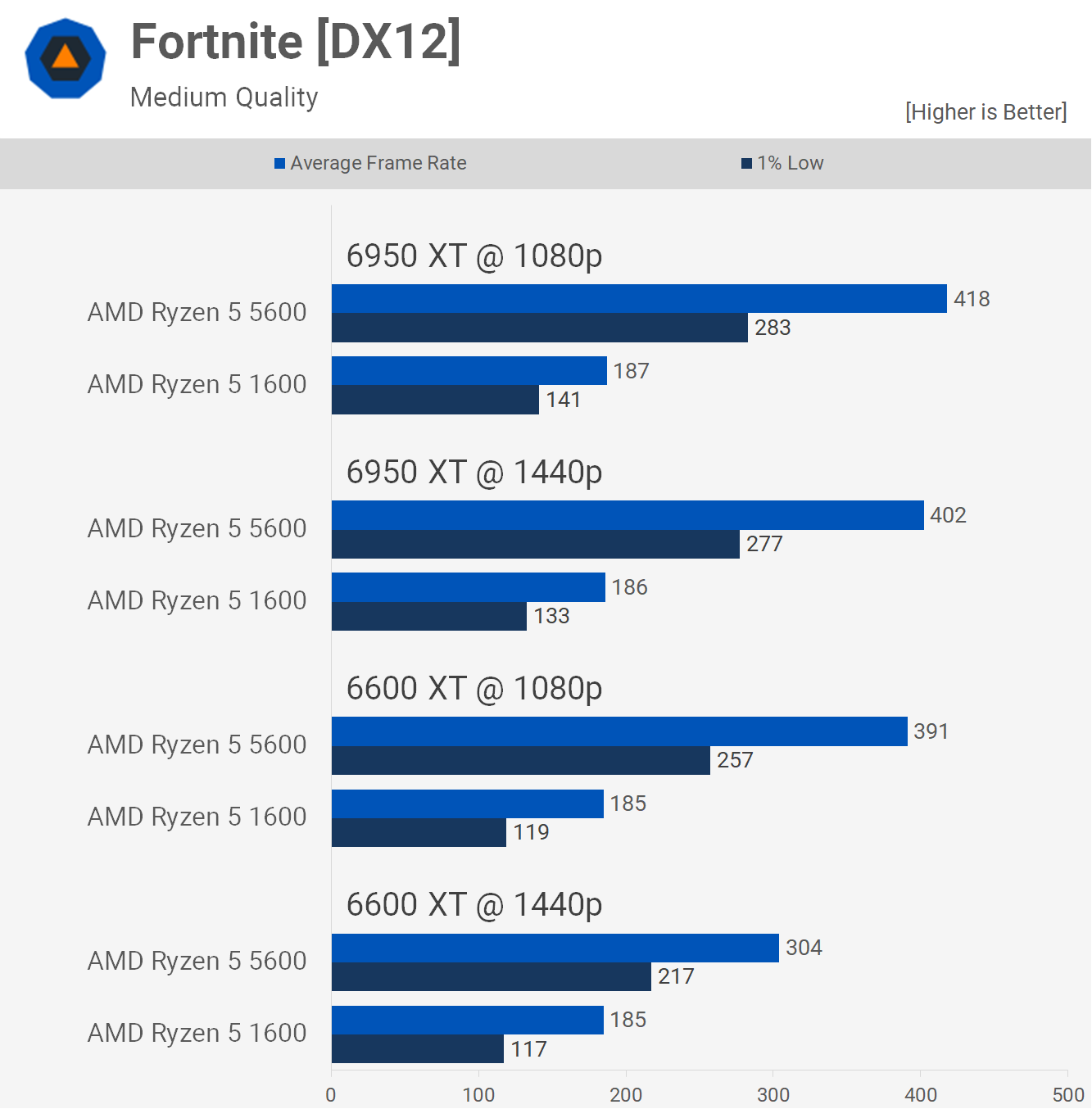
The margins exceeded 100% at 1080p, even with the 6600 XT, and we saw the average frame rate boosted by an incredible 124% with the 6950 XT.
Therefore, more competitive gamers amongst you can enjoy massive performance gains with the 5600 and while the 1600 was playable, in the more action packed sections of the game the 5600 maintained much higher frame rates. Generally, I like to play Fortnite with a solid 200 fps on my 144 Hz panel, and the 5600 has no issue maintaining that level of performance.

For some serious driving, we have the ACC results. The Ryzen 1600 is playable here, but the performance is a bit miserable. As we've discovered recently, cache performance plays a key role for this title and this is a big part of why the 5600 is much faster.
Whereas the 1600 has a total L3 cache of 16 MB, it's split in half, so 8MB shared for 3 cores. The 5600 on the other hand has a single large 32MB L3 cache that has shared access for all 6 cores.
Using the medium quality settings, both configurations are heavily CPU limited, but the 5600 was almost 80% faster, pushing the average frame rate well over 100 fps, which we imagine is plenty for a driving simulator.

In Cyberpunk 2077 we find up to a 72% performance improvement with the 5600 when using the 6950 XT at 1080p.
Even with the 6600 XT we're looking at a ~40% improvement at 1080p, with a 15-20% boost at 1440p. So even for lower-end graphics cards, the 5600 still offers a nice boost, while for those targeting high refresh rate gaming the upgrade is massive.

Of course, there are games such as Dying Light 2 which aren't CPU intensive, at least the single player portion which we use for testing. In this case, the Ryzen 5 1600 worked well and with the 6600 XT we were entirely GPU limited.
There is some separation with the 6950 XT, though at 1440p the 5600 was just 14% faster and it wasn't until we dropped the resolution to 1080p that the margin opened up quite significantly to a 32% advantage in favor of the newer Zen 3 processor. The Ryzen 5 1600 was very playable, so the CPU upgrade didn't see a big change in this title.

The same is true for F1 2021, where the Ryzen 5 1600 was good for over 160 fps on average with 1% lows of over 100 fps. I'm certainly not a pro at this game, but north of 100 fps does feel extremely smooth and input is good.
But if you're after more performance, the 5600 will certainly deliver, boosting 1% lows by as much as 73% with the 6950 XT and blowing the average frame rate up to over 300 fps for an insane 103% improvement.
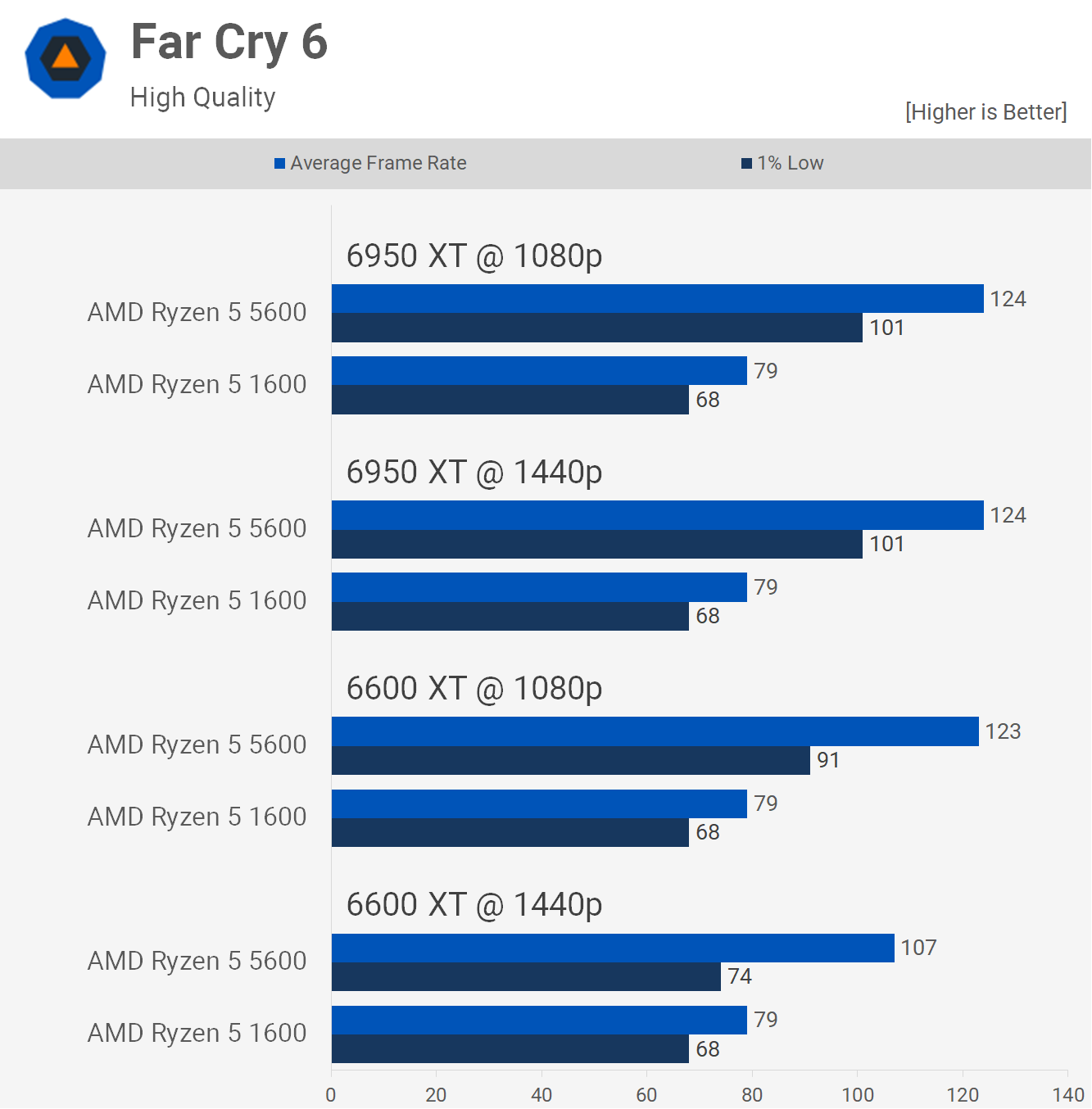
Far Cry 6 is particularly sensitive to memory and cache performance and although it doesn't utilize 6-core/12-thread processors well, that's not the issue. DRAM and cache latency will be the primary issue limiting the 1600 to just shy of 80 fps for the average frame rate.
Both the 1600 and 5600 did limit performance with the 6950 XT, though the newer Zen 3 part was up to 57% faster and still 35% faster using the 6600 XT at 1440p.
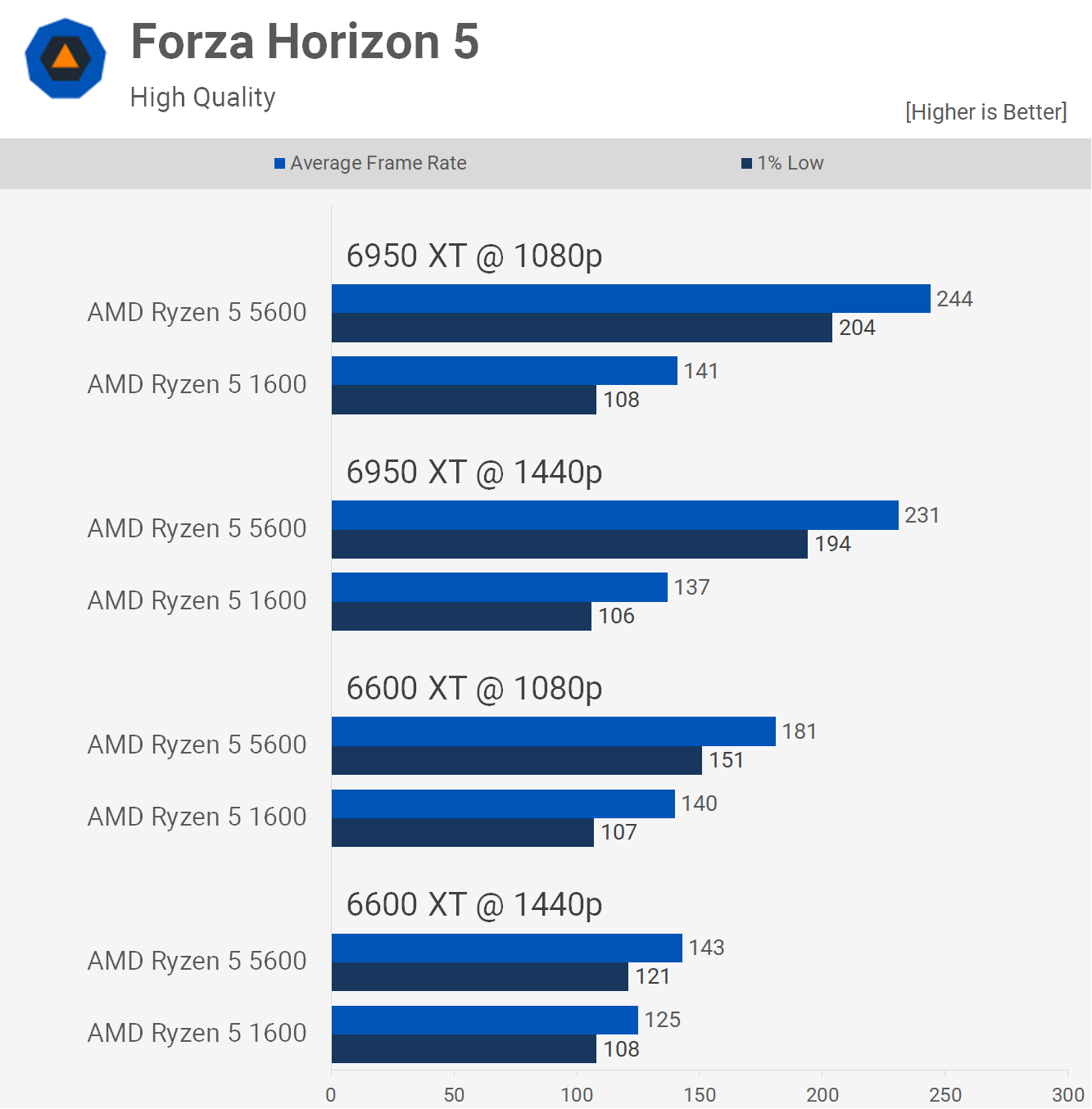
Forza Horizon 5 is another game that doesn't lean that heavily on the CPU, though to push very high frame rates you will need a CPU with greater throughput. The 1600 is limited to around 140 fps whereas the 5600 can put up beyond 200 fps, making it 73% faster when paired with the 6950 XT.
With the 6600 XT we're looking at a 29% performance boost at 1080p. Good gains, though it is worth noting that even for high-refresh rate gaming the Ryzen 5 1600 was usable in this title.

Hitman 3 is another game that plays well enough on the Ryzen 5 1600. For those of you using mid-range to lower-end GPUs with quality settings targeting just over 60 fps, the 1600 will be as good as anything else.
But if you want that high refresh rate experience an upgrade will be required. We maxed out the 6950 XT at 1440p with the 5600, delivering a 50% performance jump and then 73% at 1080p.

The Riftbreaker was rough on the Ryzen 5 1600, with frequency frame dips well below 60 fps. In fact, the average frame rate didn't even hit 60 fps, while 1% lows fell just short of 30 fps, it was a very laggy experience. I'm sure some will claim this level of performance to be playable and while maybe true, it's far from optimal. For me it certainly wasn't enjoyable.
This is where the 5600 comes in, boosting performance with the 6950 XT at 1080p by 75% when looking at the average frame rate, and a whopping 110% increase for the 1% lows. The gains were also high at 1440p with up to 104% better frames and we even saw up to a 62% boost with the 6600 XT at 1080p.
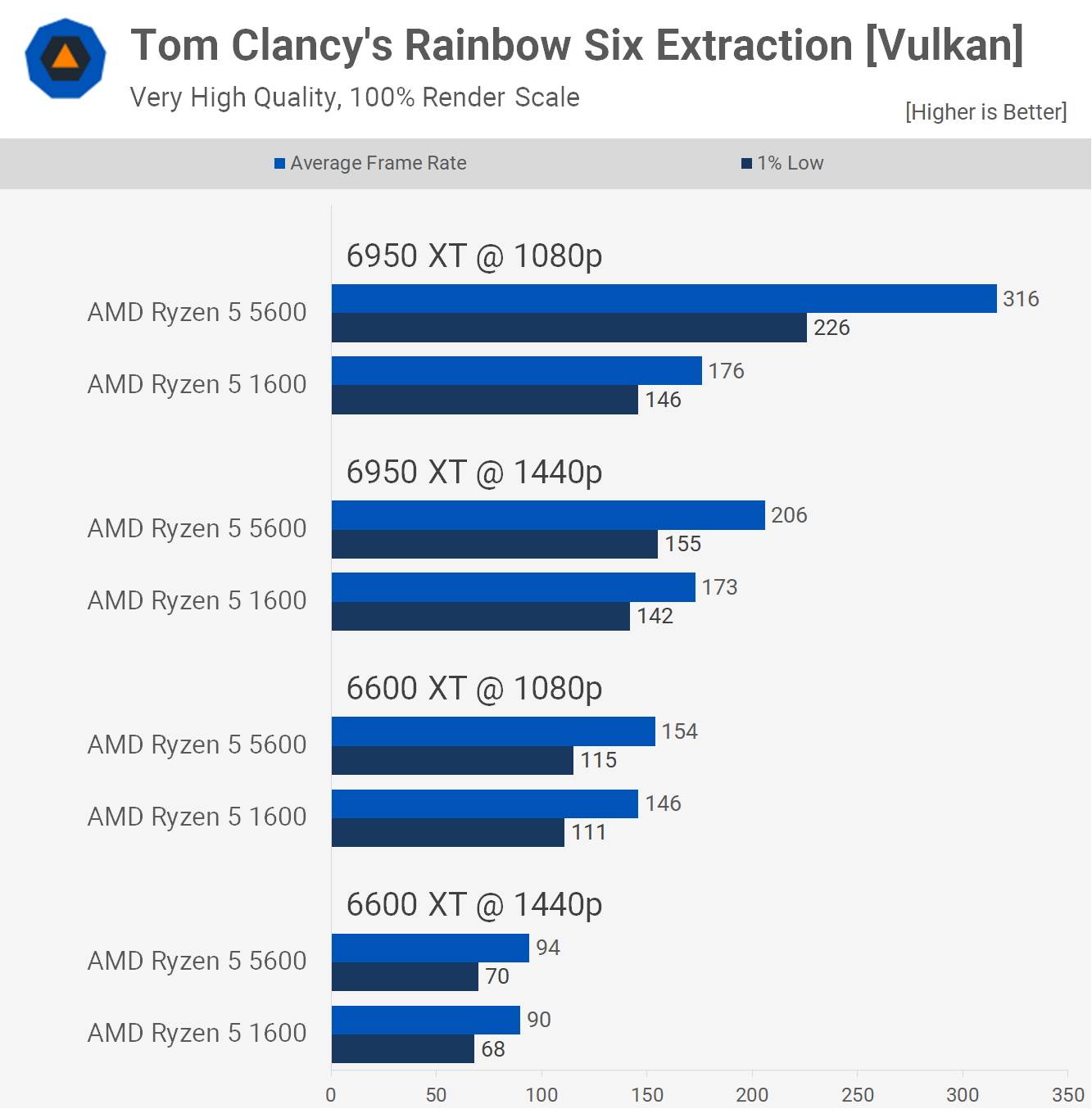
Moving on we have Rainbow Six Extraction, another title where the Ryzen 5 1600 is able to deliver perfectly playable performance, maxing out the Radeon RX 6600 XT with the second highest quality preset at over 140 fps on average and pushing the 6950 XT as high as 170 fps.
The R5 5600 wasn't a huge upgrade in this game for the most part, boosting performance with the 6950 XT at 1440p by 19% which is a lot, but it's also a lot less than the 70% we've typically seen. At 1080p the margin did blow out to 80% in favor of the 5600, so those seeking extreme frame rates will be very pleased with the upgrade.
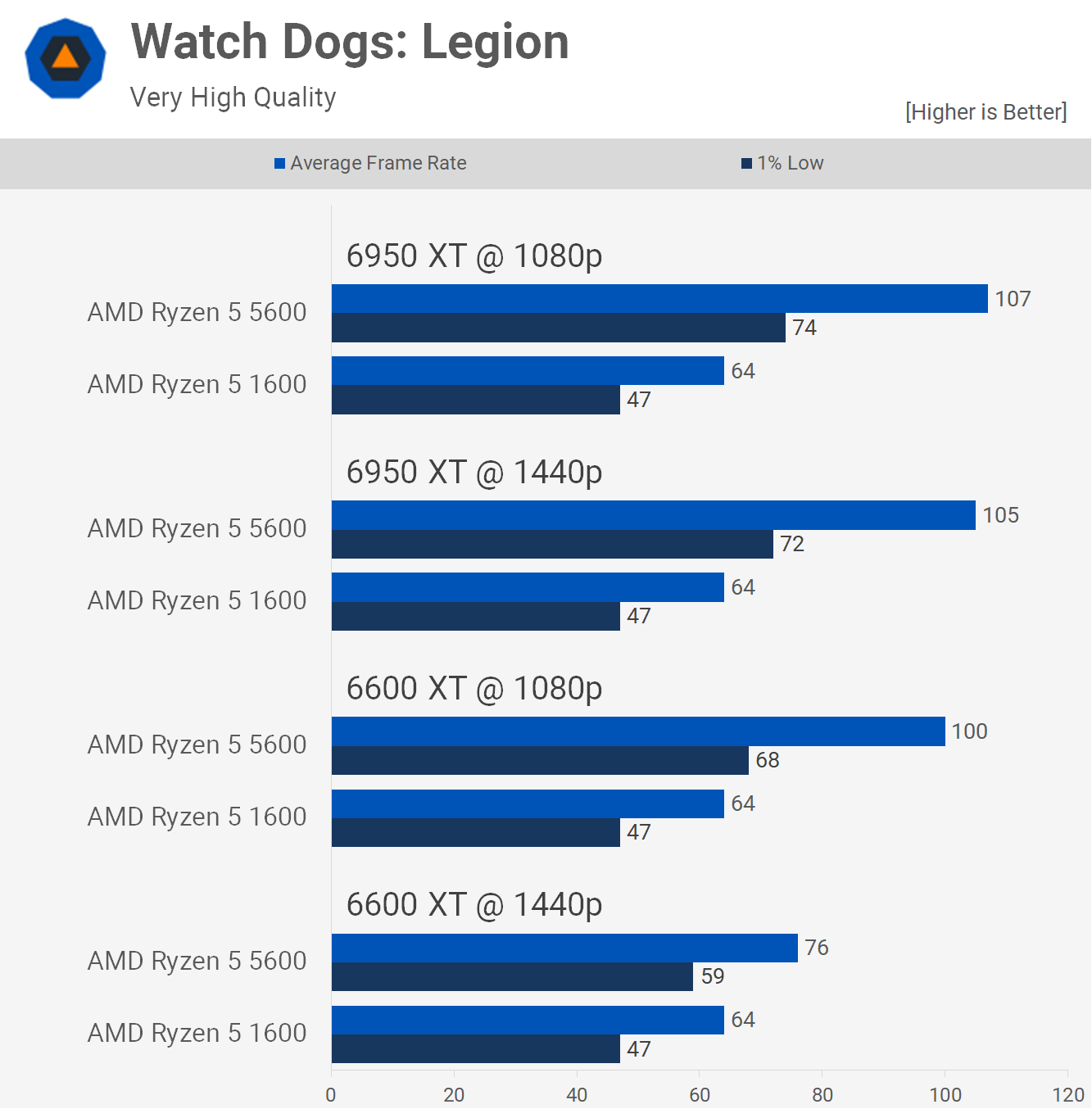
Last up is Watch Dogs Legion results and here we're looking at massive performance gains when upgrading to the 5600.
The R5 1600 struggled in this title, only producing an average frame rate of 64 fps with a 1% low figure of just 47 fps. In contrast, the 5600 improved the average frame rate by 67% and the 1% lows by 57%, so big performance gains.
Even with the 6600 XT big gains were seen at 1080p and although jumping up to 1440p with this mid-range GPU did reduce the margin, the 5600 was still up to 26% faster.
25 Game Average
For those looking at upgrading to 6950 XT-levels of performance, either this GPU generation or the next, in today's games the 5600 will deliver on average 72% more performance for those gaming at 1080p, or 57% at 1440p. That's very substantial gains for high-end GPUs.

For more mid-range offerings such as the 6600 XT, you're still looking at around 40% better performance at 1080p with a 15% boost at 1440p, though we did see a 20% improvement to 1% lows.

Now here's a breakdown of the margins seen for each of the 25 games tested looking at the 1080p 1% low data when paired with the Radeon RX 6950 XT. On average we saw a 70% performance uplift for the Ryzen 5 5600 with increases as high as 111%. The smallest gains were still around 30% though, so for high-end GPUs this is a serious CPU upgrade.

Even with current generation mid-range GPUs the gains were significant, as seen above when looking at the 1080p 1% lows with the 6600 XT. Here the 5600 was on average 44% faster. There were a handful of times that were GPU bound, but that's to be expected when using a lower tier GPU. But overall the 5600 proved to be a serious upgrade from the 1600.
What We Learned
It's crazy to see just how far desktop CPUs have come in the last 5 years, especially at the $200+ price point. Back in 2017 you had the choice of the Ryzen 5 1600 or the Core i5-7600K. Those two CPUs are now significantly slower than similarly priced parts in 2022 such as the Ryzen 5 5600 and Intel's new Core i5-12400F.
The Core i5-12400F is a part we recommend to new system builders, but it's not a good upgrade for current users on Intel's LGA 1200 or older platforms as they will require a new motherboard. This is what makes the Ryzen 5 5600 a bit special as recent BIOS support has enabled those with 5-year-old motherboards to buy it as a drop-in upgrade.
Of course, there's also plenty of users who went from the Ryzen 5 1600 to something like the 2700X, 3600, 3700X, and so on as many of those parts were available brand new for well below MSRP.
It's likely only now that an affordable Zen 3 CPU is available that those same users are considering upgrading, and fortunately they can now do so without having to upgrade their motherboard.
Likewise, there must be plenty of people who have yet to upgrade at all. Although the Ryzen 5 1600 certainly looked slow compared to the 5600 with an extremely high-end GPU, for those using a more modest GPU, the R5 1600 isn't nearly the bottleneck shown here.
Moreover, those who play games that don't require hundreds of frames per second, or games such as Dying Light 2 which lean more heavily on the GPU than they do the CPU, won't feel the need for an immediate upgrade either.
Having said that, with the ability to acquire a new Zen 3 CPU for as little as $175 as a drop-in upgrade, we suspect this will be an offer that's simply too good to ignore for many. It sure would be nice if Core i5-7600K owners on their expensive Z270 motherboard had the ability to drop in the Core i5-12400F, heck, even a 10th-gen part would be amazing, but no, they got nothing but a sharp stick in the eye when Intel released the 8700K just nine months later.
Rumor has it that Intel's 14th-gen due to arrive next year will move to yet another new socket with 2551 pins, meaning LGA 1700 will die this year after 13th-gen arrives. To harp on this point yet again, AMD needs to officially commit to AM5 and they need to do it ASAP. It's a proven formula and we believe continued platform support is a significant feature that would be a big win for consumers in future platforms.
Shopping Shortcuts:
- AMD Ryzen 5 5600 on Amazon
- AMD Ryzen 7 5700X on Amazon
- AMD Ryzen 7 5800X3D on Amazon
- Intel Core i5-12400F on Amazon
- Intel Core i5-12600K on Amazon
- Intel Core i7-12700K on Amazon
- Intel Core i9-12900K on Amazon
Further Testing
Since we published this review, we have run additional benchmarks and new reviews around mainstream Ryzen CPUs. Here are featured articles you may be interested in:
